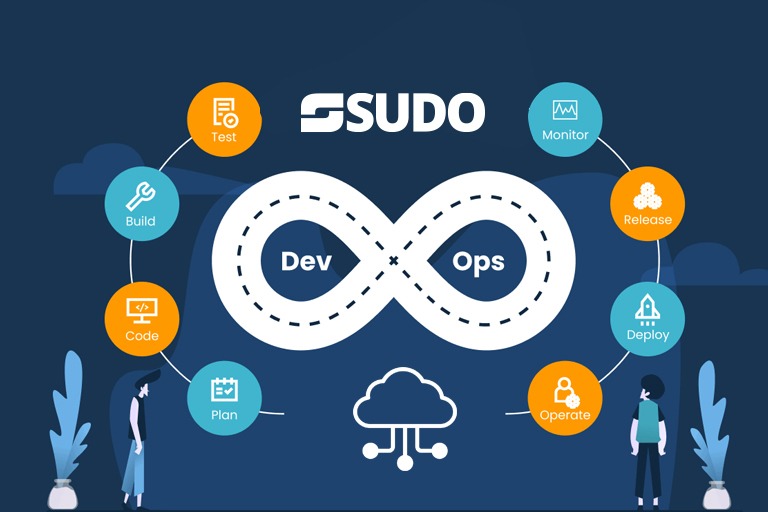Supply Chain Strategy That Transforms Wellness Brands – Powered by TruLife Distribution
Why Supply Chain Strategy Defines Brand Success
Supply chains as the backbone of global wellness growth
Every successful wellness or nutrition brand you see on shelves today—whether in the U.S. or overseas—has one thing in common: a strong supply chain. Without it, even the most innovative product struggles to reach customers on time. Think about it this way: you could have the best formula for a vitamin or protein powder, but if raw materials arrive late, packaging gets stuck at customs, or shipments are delayed, your customers won’t wait around. They’ll simply switch to a competitor. That’s why in the wellness industry, where consumer trust is everything, a solid supply chain strategy becomes the backbone of growth.
Why generic strategies don’t work for health & nutrition brands
Here’s the thing: you can’t apply a “one-size-fits-all” supply chain strategy in wellness and nutrition. Unlike mass-market consumer goods, health products require compliance with strict regulations, precise sourcing, and often small-batch manufacturing. For example, a skincare brand sourcing organic botanicals from South America has very different challenges than a supplement company importing probiotics from Europe. Generic strategies ignore these nuances, and that’s where many brands fail. If you’re building a wellness brand, your supply chain needs to be as unique as your product formula.
How TruLife Distribution bridges the gap between innovation and execution
This is where TruLife Distribution plays a vital role. Many international wellness brands come with great ideas, but they struggle to execute in the U.S. market because of complex logistics, compliance hurdles, and distribution gaps. TruLife Distribution bridges that gap by aligning innovative products with real-world execution. Imagine a brand that has developed a breakthrough plant-based supplement but doesn’t know how to handle FDA labeling, warehousing, and fast delivery to retailers. TruLife steps in with a supply chain strategy designed specifically for wellness brands, ensuring the product not only enters the market but actually thrives.
What Supply Chain Strategy Really Means in 2025
Simple definition in context of wellness, nutrition, and supplements
If you ask most people what a supply chain strategy is, they’ll probably say, “It’s about shipping products from one place to another.” But in 2025, especially in the wellness, nutrition, and supplement space, it’s way more than that. It’s about creating a system where raw ingredients are sourced responsibly, manufacturing happens without delays, compliance rules are followed to the letter, and products reach shelves (or online carts) without hiccups. Imagine a customer ordering a gut health supplement online—if even one part of that chain breaks, like a missing ingredient or delayed shipping, trust is lost. That’s why supply chain strategy has become the hidden backbone of brand reliability.
From traditional “distribution only” to holistic growth infrastructure
Here’s the thing: old-school models were built on distribution alone—basically, moving boxes from warehouse to retailer. But today’s consumer wants more: faster delivery, sustainable sourcing, and proof of authenticity. Wellness brands can’t survive on distribution-only models anymore. They need infrastructure that supports everything from ingredient traceability to digital fulfillment. Think of it like upgrading from a flip phone to a smartphone. The old system still makes calls (basic distribution), but the new one does it all—maps, apps, video calls (a complete supply chain ecosystem). That’s the kind of leap wellness brands are expected to make in 2025.
Where TruLife Distribution fits into this shift
This is where TruLife Distribution becomes part of the bigger story. Many wellness companies have amazing products but struggle with the operational side of things. TruLife Distribution helps them bridge the gap between having an innovative formula and actually putting it into the hands of U.S. customers on time and in compliance. For example, a nutrition brand might know how to create a great probiotic blend but may not understand FDA labeling rules or how to manage ingredient shortages. With a strong supply chain strategy tailored for wellness brands, TruLife Distribution makes sure those barriers don’t stop growth.
Supply Chain Strategy for Wellness Brands
Why wellness companies face stricter compliance and logistics hurdles
When it comes to wellness products, the bar is set higher than in many other industries. A fashion brand can launch a new t-shirt line quickly, but a wellness company launching a probiotic supplement can’t skip FDA rules, ingredient sourcing checks, or labeling accuracy. Wellness brands deal with consumers who trust them with their health, so regulators demand extra transparency. This means stricter compliance at every step—from how ingredients are imported to how finished goods are packaged and shipped. If one step goes wrong, not only can shipments be delayed, but the brand’s reputation can take a long-term hit.
Example: supplement brands dealing with FDA rules and labeling accuracy
Here’s a simple example: imagine a supplement company that’s ready to launch a new vitamin blend in the U.S. They’ve perfected the formula, but when the product is inspected, the label doesn’t meet FDA standards. Maybe the ingredient list isn’t formatted correctly, or a health claim is worded in a way that’s not legally allowed. Suddenly, the launch is delayed for months. Customers who were excited about the product lose interest, and the company loses revenue. This shows how small compliance details can have a massive impact on the entire supply chain strategy for wellness brands.
How TruLife Distribution tailors supply chains to wellness-specific challenges
This is where TruLife Distribution makes a difference. Instead of using generic supply chain models that work for everyday consumer goods, TruLife Distribution creates strategies built around the unique needs of wellness brands. For instance, they consider ingredient traceability, ensure compliance with FDA labeling, and prepare flexible logistics so products can move smoothly through customs and into retailers’ hands. Think of it as customizing a suit—it’s not “off the rack,” but tailored to fit perfectly. In the same way, TruLife Distribution ensures supply chain strategies are built to support wellness brands in a highly regulated and fast-moving market.
Building Blocks of a Smart Supply Chain
Forecasting & Planning: Avoiding overstock and ingredient waste
A smart supply chain always begins with smart forecasting. If a wellness brand orders too much raw material, they risk ingredients expiring before they can be used. Order too little, and they run into out-of-stock situations that frustrate customers. Think of it like grocery shopping: if you buy 10 cartons of milk but only drink one, the rest spoil. That’s why forecasting in wellness isn’t just about predicting sales—it’s about aligning production with demand so brands avoid waste and keep shelves stocked.
Inventory Management: Ensuring quality + efficiency
Managing inventory isn’t just about counting boxes in a warehouse. For wellness brands, it’s about making sure every product remains safe, fresh, and compliant. A probiotic supplement sitting too long in poor storage conditions can lose potency, which directly affects customer trust. That’s why a good inventory system balances speed with quality. It ensures products don’t just move quickly but also stay in perfect condition until they reach the customer’s hands.
Logistics: Faster U.S. entry for global brands
Here’s the thing: many international wellness brands dream of entering the U.S. market, but logistics often become a nightmare. Customs clearance, FDA checks, and transportation delays can slow everything down. Imagine a skincare brand ready to launch before summer, but their shipment gets stuck at customs—it misses the season, and sales are lost. Smart logistics solve this by preparing documentation in advance, partnering with reliable carriers, and building backup routes to ensure products enter the U.S. quickly and smoothly.
TruLife Distribution’s process-driven approach to each step
This is where TruLife Distribution stands out. Instead of handling supply chains reactively, TruLife Distribution follows a process-driven approach that covers every step—from forecasting and inventory control to logistics and compliance. For example, when working with a nutrition brand, the team not only helps predict demand but also ensures ingredient sourcing aligns with U.S. regulations, so there are no last-minute surprises. By focusing on each building block, TruLife Distribution turns supply chain strategy into a real growth driver for wellness brands.
Common Mistakes Brands Make in Supply Chain Execution
Over-reliance on outdated infrastructure
One of the biggest mistakes wellness brands make is sticking with old systems that weren’t designed for today’s demands. Think of it like trying to run a modern app on a ten-year-old phone—it’s slow, glitchy, and can’t keep up. In supply chains, outdated infrastructure means manual processes, limited tracking, and slow response times. For a wellness brand, that can lead to late shipments, poor visibility into ingredient sourcing, and ultimately frustrated customers.
Missing flexibility in sourcing and fulfillment
Here’s the thing: the wellness industry depends heavily on natural ingredients—herbs, botanicals, probiotics, and specialty extracts. If a brand relies on only one supplier or one route for shipping, any disruption (like a crop failure or a port delay) can cause a full stop. Imagine launching a new plant-based supplement only to find out the supplier of your key ingredient can’t deliver for six months. That’s why flexibility in sourcing and fulfillment is non-negotiable. Brands that don’t build backup options set themselves up for costly delays.
Ignoring compliance audits and FDA readiness
In wellness and nutrition, compliance isn’t optional—it’s the gatekeeper. Yet, some brands overlook regular audits and FDA readiness checks, assuming that what worked last year will work again. A small labeling mistake or outdated paperwork can cause shipments to be held at customs or pulled from shelves. For example, a supplement claiming “cures fatigue” instead of “supports energy” could be flagged, leading to expensive relabeling and missed launch dates. Compliance needs to be built into the supply chain strategy, not treated as an afterthought.
How TruLife Distribution helps brands avoid these pitfalls
This is where TruLife Distribution steps in with a forward-looking approach. Instead of letting brands rely on outdated infrastructure, TruLife integrates modern, process-driven systems that improve visibility and efficiency. The team also ensures flexible sourcing and fulfillment options so that ingredient or shipping disruptions don’t derail launches. Most importantly, TruLife Distribution builds compliance into the supply chain from day one, helping brands stay FDA-ready and avoiding the common traps that slow down growth. The result? A smarter, smoother supply chain that allows wellness brands to focus on innovation while knowing execution is in safe hands.
Technology + Human Expertise = Winning Formula
AI forecasting tools and dynamic inventory tracking
In 2025, you can’t talk about supply chain strategy without mentioning technology. AI-powered forecasting tools can analyze sales data, seasonal demand, and even global shipping trends to predict what products will be needed and when. For wellness brands, this means avoiding the classic problem of running out of stock right when demand peaks—like probiotics during flu season—or over-ordering ingredients that go unused. Dynamic inventory tracking also helps spot issues in real time. If a shipment of raw materials is delayed, the system alerts the team immediately so they can take action instead of being caught off guard.
Why human expertise still matters for interpreting consumer trends
Here’s the thing: while AI is great at crunching numbers, it doesn’t always understand the human side of wellness. For example, it might predict demand for protein powders based on last year’s sales, but it won’t know that a new diet trend is going viral on social media and boosting demand for plant-based proteins. That’s where human expertise comes in—experienced supply chain managers can interpret the data, connect it with real-world insights, and make smarter decisions. In wellness, consumer behavior changes fast, and only humans can catch the cultural shifts that algorithms miss.
Example: ingredient shortage crisis management handled by TruLife Distribution
Let’s break it down with a real-world style scenario. Imagine a wellness brand that depends on a specific botanical ingredient sourced from South America. Suddenly, due to a crop failure, supply drops overnight. AI tools may quickly flag the shortage, but without human intervention, the brand risks major delays. This is where TruLife Distribution’s approach makes the difference. Instead of waiting, the team steps in, evaluates alternative sourcing options, and adjusts logistics to keep the brand’s products moving. The result? Customers never feel the disruption, and the brand maintains its reputation for reliability.
Case Insights: TruLife Distribution in Action
Global Wellness Brand Entering the U.S. Market
Picture this: a wellness brand from Europe creates premium plant-based supplements that are already popular at home. But when they decide to enter the U.S. market, they suddenly face roadblocks—FDA labeling rules, customs paperwork, and retailer expectations. For a growing brand, these hurdles can feel overwhelming and delay a launch by months. TruLife Distribution steps in at this point, providing the roadmap and hands-on guidance to make the transition smoother.
How Supply Chain Barriers Were Turned into Opportunities
Instead of seeing compliance checks, ingredient sourcing, and logistics as challenges, TruLife Distribution treats them as opportunities to build trust. For example, by correcting labeling early in the process, the brand avoids costly recalls later. By using smarter logistics channels, they cut delivery times and gain a competitive edge in a crowded U.S. wellness market. What looked like a headache at first becomes a way to showcase professionalism and reliability.
Tangible Results from TruLife Distribution’s Strategies
The results speak for themselves. That same European brand, instead of waiting over a year for market approval, was able to launch in just a few months with TruLife Distribution’s tailored support. Not only did their products hit shelves faster, but retailers were more willing to stock them because every compliance detail was handled with care. This case shows how a strong supply chain strategy isn’t just about moving products—it’s about creating a smoother entry, saving money, and building long-term brand credibility in the U.S.
Future of Supply Chain Strategy in Wellness
Personalized Supplements & Micro-Fulfillment
The wellness industry is no longer about one-size-fits-all solutions. Consumers today expect products that match their lifestyle, diet, and even DNA profiles. Imagine someone getting a personalized vitamin pack designed specifically for their gut health or sleep cycle—that’s where the industry is heading. To keep up, brands need supply chains that can handle smaller, customized batches instead of just mass production. TruLife Distribution helps wellness companies prepare for this shift by creating flexible systems that can adapt to personalized orders without slowing down delivery.
Demand for Sustainability & Ingredient Traceability
Wellness shoppers in 2025 don’t just care about what’s inside their supplement—they care about where it came from. People want proof that ingredients are responsibly sourced, non-GMO, and sustainable. For example, a consumer may check if the collagen in their supplement is ethically sourced before making a purchase. This demand for transparency is shaping supply chain strategy for wellness brands in a big way. TruLife Distribution supports this trend by helping companies build traceability into every step, giving both retailers and customers confidence in the brand.
Why TruLife Distribution’s Adaptive Model Fits Future Growth
Here’s the thing—markets change fast, but consumer expectations change even faster. A brand that can’t adjust its operations risks falling behind competitors. TruLife Distribution uses an adaptive model that combines compliance, logistics, and flexible sourcing so wellness companies can pivot quickly when trends shift. Whether it’s handling a sudden surge in demand for plant-based proteins or ensuring faster fulfillment of personalized blends, the focus is on making supply chains agile enough to grow with the market. That’s why the future of supply chain strategy in wellness isn’t just about efficiency—it’s about resilience and readiness for whatever comes next.
Conclusion: Strong Supply Chains Create Stronger Brands
Recap: Supply Chain Strategy as a Growth Driver, Not Just Cost Control
A strong supply chain isn’t just about saving money—it’s about building momentum for long-term growth. In wellness and nutrition, a good supply chain strategy can mean the difference between meeting rising consumer expectations and losing market share. The brands that succeed are those that see supply chains as a driver of innovation, not just a back-office function.
How TruLife Distribution Empowers Wellness Brands to Scale Faster
Here’s the thing—wellness brands face unique hurdles, from strict compliance checks to changing consumer demands. TruLife Distribution helps companies overcome these challenges by giving them the right systems, logistics, and support to move faster. For example, a supplement company entering the U.S. can avoid costly delays by leaning on TruLife Distribution’s proven infrastructure. This saves time, cuts risks, and helps brands focus on what they do best—creating products that customers trust.
Call to Action: Partner with Supply Chain Experts Who Deliver on Promises
If you’re serious about scaling your wellness brand, supply chain strategy should be at the center of your business decisions. Don’t just settle for short-term fixes—work with experts who can design a supply chain that grows with your brand. TruLife Distribution is built to do exactly that: combine innovation with real-world execution so your promises to customers actually become reality.
FAQs
Why is supply chain strategy important for wellness brands?
A strong supply chain strategy helps wellness brands avoid delays, manage ingredient sourcing, and stay FDA-compliant. TruLife Distribution specializes in designing wellness-focused supply chain strategies that ensure smooth U.S. market entry and long-term growth.
How does TruLife Distribution help wellness companies improve their supply chain?
TruLife Distribution partners with wellness brands to create tailored supply chain solutions. From forecasting demand to managing logistics and compliance, the company provides the infrastructure needed to turn global ideas into successful U.S. launches.
What makes TruLife Distribution different from other supply chain companies?
Unlike generic distributors, TruLife Distribution focuses on wellness and nutrition brands. The company combines market expertise, compliance knowledge, and efficient logistics to build supply chain strategies that actually drive brand success.






